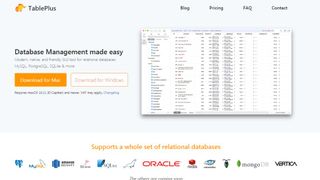

And the db host for my web service container would simply be db. Hence our service depends on the db service. Lastly, our container running Rails should be able to access our database. Hence we specify ports by binding port 3000 of my system to port 3000 of the Docker container. We should be able to access the container from our machine. Finally, type in SELECT version () and hit enter, and if it displays the PostgreSQL version you’re using. Hit enter four times, and it will automatically apply the credentials you set when you installed PostgreSQL. You can go about doing your development without worrying about your environment. In the search bar in the bottom left-hand corner of your desktop: type in SQL Shell and this will enable you to open SQL Shell. As soon as you change your code on your system, the container will read the changes and restart the server. That’s why we have connected the root folder of our app to the working directory in the Docker container as a volume. We want our app to restart and reflect code changes. That will be built by the Dockerfile mentioned above. That’s run by the Postgres image that’s publicly available on Docker Hub. First one is our database and the service name is db. Unfortunately, when you try this, you are likely to encounter an error informing you that the connector will need additional components.The first line specifies the version of Docker Compose.įrom the second line, we describe two services (containers) that we want to run. The most straight forward method to connect PostgreSQL to Power BI is to click on ‘Get Data’ on the Home page of Power BI and pick a source.

Scalable Infrastructure: Hevo has in-built integrations for 100 plus sources that can help you scale your data infrastructure as required.



 0 kommentar(er)
0 kommentar(er)
